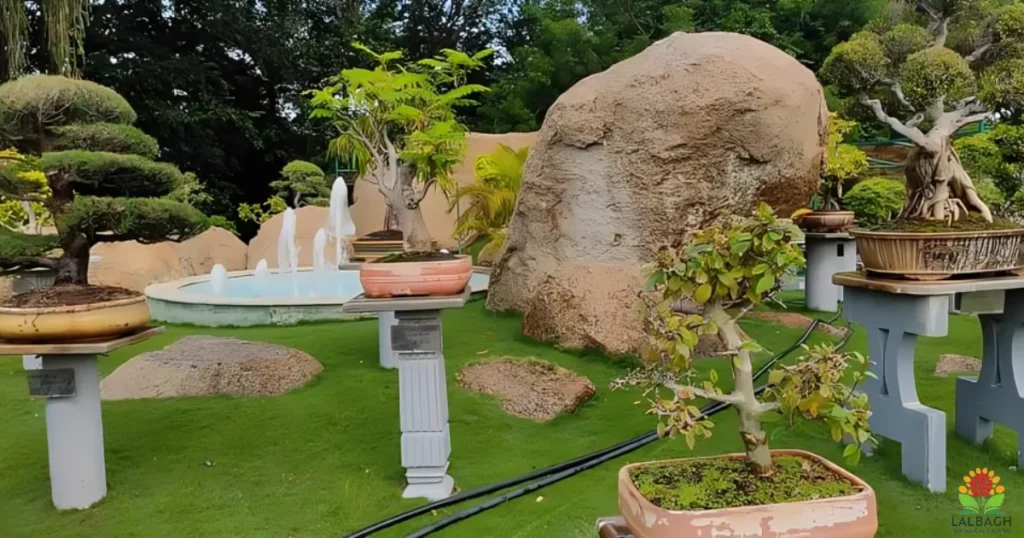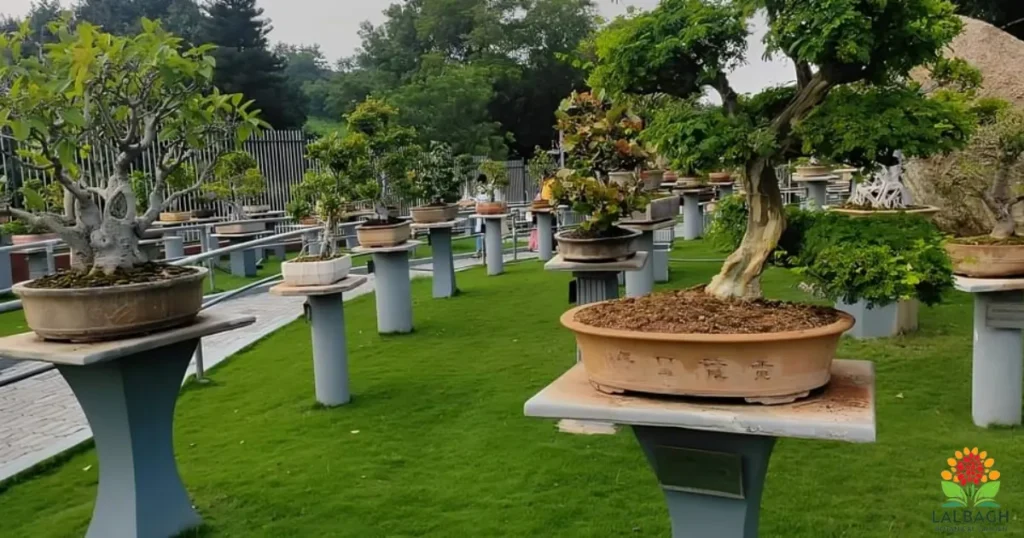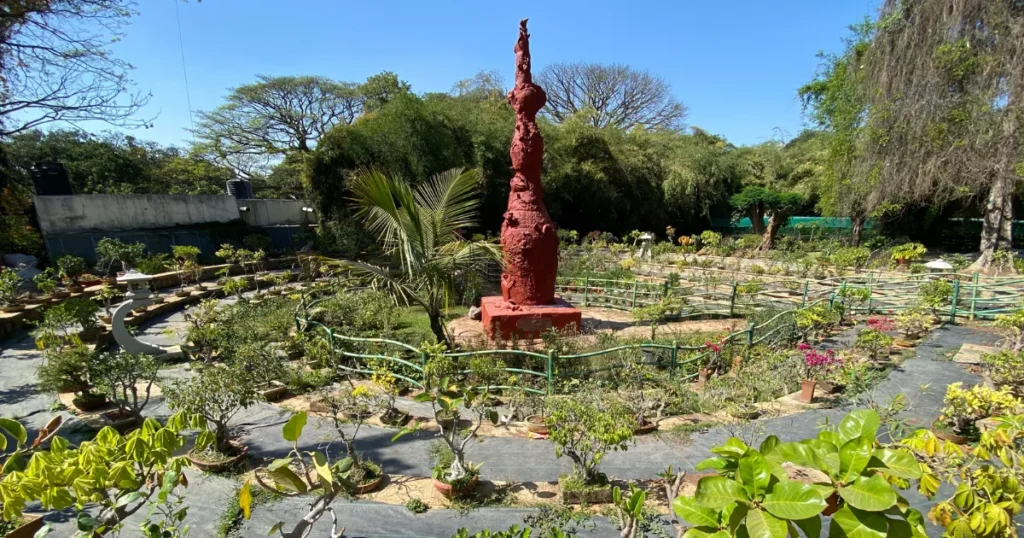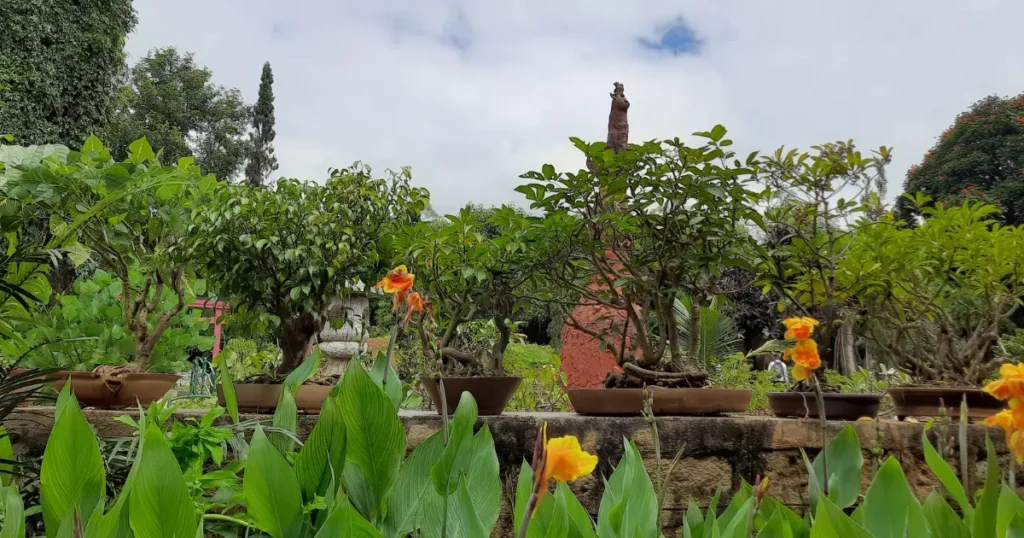Hello Everyone Today’s We are share this article with you for interesting things to learn About A Beautiful Bonsai garden at Lalbagh in Bangalore. Bonsai are tiny trees grown in pots. The Lalbagh Bonsai Garden has many bonsai trees. There are trees like ficus, banyan, peepal, and neem. The bonsai trees are very small sizes. People can walk and see the tiny bonsai trees. There are guides to explain about the bonsai. The Bonsai Garden lalbagh is a special place to visit at Lalbagh.
Table of Contents
ToggleWhat is the definition of bonsai trees?
Bonsai are tiny trees grown in little pots. The word bonsai is a Japanese and its means “tree in a tray.” People started growing bonsai trees in China. Then the idea spread to Japan and all over the world. To make a bonsai bigger trees are made really small. Their roots and branches are trimmed carefully with tools. Their branches are shaped into nice designs using wires.
Bonsai are grown in very tiny pots to keep them little. They are made to look like real miniature trees. Making bonsai takes special Works over many years as the tree grows. Like normal trees, bonsai need sunlight, water, food and care to stay alive. This is a so patience and dedication work to shape a bonsai and keep it growing.
Lalbagh Bonsai Garden Timings
Day | Timings |
|---|---|
Garden opens | 6:00 AM to 7:00 PM |
Morning walkers' hour | 6:00 AM to 9:00 AM to 6:00 PM to 7:00 PM |
Garden Open for Public Bonsai Garden Entry | 9:00 AM to 6:00 PM |
Garden closes | 7:00 PM |
Bonsai Tree Types Found in the Lalbagh Bonsai Garden

Tree Type | Details |
|---|---|
Ficus | Different ficus species like benjamina and microcarpa. Small leaves. |
Banyan | Banyan tree varieties native to India. Has aerial roots. |
Peepal | Sacred fig tree. Heart-shaped leaves. |
Neem | Tropical neem tree known for medicinal properties. |
Bamboo | Fast growing bamboo species made into miniature trees. |
Cycas | Ancient cycad species reproduced as bonsai. |
Bougainvillea | Shrub with colorful bracts surrounding the flowers. |
Juniper | Evergreen conifers like the Chinese Juniper. |
Pomegranate | Fruit tree native to India. |
Schefflera | Tropical shrubs with glossy green leaflets. |
10 Interesting Facts About Lalbagh Bonsai Trees

- The Lalbagh Botanical Garden in Bangalore has one of the best bonsai collections in India.
- The Lalbagh Bonsai Garden was set up in 1989 and has over 1000 bonsai trees of 100+ species.
- Some of the bonsai trees at Lalbagh are over 80 years old passed down through generations.
- Unique native Indian tree varieties like ficus, peepal, neem and banyan are grown as bonsai.
- Tropical trees like bougainvillea, bamboo, schefflera are adapted as bonsai for the Indian climate.
- Lalbagh bonsai artists use techniques like pruning, wiring, clamping, defoliation and repotting.
- The garden has trained guides to explain the various bonsai trees and how they are maintained.
- Workshops are held regularly at Lalbagh for bonsai enthusiasts to learn the art of bonsai.
- Visitors can see miniature replicas of forests landscapes using native and ornamental bonsai.
- The Lalbagh Bonsai Garden helps preserve ancient bonsai techniques adapted locally.
5 Best Bonsai Trees to Grow at Home
Tree Type | Details |
|---|---|
Ficus | Tropical fig, easy indoor care, prune frequently |
Juniper | Evergreen, tolerant of indoors, responds well to pruning and wiring |
Japanese Maple | Deciduous, colorful leaves, likes sunlight, needs winter dormancy |
Azalea | Flowers in spring, requires humidity, repot annually after flowering |
Chinese Elm | Deciduous, small leaves, tolerates partial shade, good for beginners |
10 Tips for Growing Bonsai Trees

- Pick the Right:
- Select a Good Pot:
- Prepare Bonsai Soil:
Use special soil that drains well but still supports the tree. You can buy mixes or make your own.
- Planting:
- Shaping:
- Watering:
- Feeding:
- Lighting:
- Humidity:
- Ongoing Care:
Best Time to Visit Bonsai Garden Lalbagh

- Winter Season (November to February): The cool and dry weather during this period is ideal for bonsai trees and this time is best for visitors.
- Morning Hours (6 AM to 10 AM): Visit the garden in the morning hours when the light is soft the temperature is good and less crowed.
- Weekdays: Plan your visit on weekdays when the garden is less crowded especially during the winter season.
- Annual Flower Show (August): The Lalbagh Botanical Garden hosts an annual flower show in August which is a popular event that attracts many visitors. The bonsai garden is also well maintained during this time.
- Independence Day (August 15): The Lalbagh Botanical Garden is beautifully decorated and illuminated on Independence Day making it a great time to visit.
- Bonsai Exhibitions: The Lalbagh Bonsai Garden organizes bonsai exhibitions throughout the year showcasing various bonsai species and styles. Visiting during these exhibitions can be an beautiful experience.
Conclusion
So Friends overall we have discussed all about The Lalbagh Bonsai Garden is a special place to see tiny trees. The garden has many types of bonsai trees that are native to India. Bonsai trees take skill and patience to create. Visiting the Lalbagh Bonsai Garden is a wonderful experience. Visiting Lalbagh Bonsai Garden is a fun and unique experience for tree lovers. Bonsai trees are truly living art.
FAQ's
Lalbagh Bonsai Garden
- A bonsai garden is a type of miniature garden featuring small sculpted trees grown in containers.
- It is the art of cultivating and training miniature trees to create aesthetically pleasing shapes and forms. Bonsai gardens provide a
- peaceful and serene setting for appreciating the beauty and tranquility of nature on a small scale.
- Bonsai trees require years of meticulous training and pruning to achieve their unique shapes and forms.
- High-quality bonsai pots, tools, and specific growing materials can be costly.
- Older, mature bonsai trees with a long history of careful cultivation are highly valued and priced accordingly.
Bonsai trees can be beneficial for vastu as they represent the presence of nature and growth in the home. Placing bonsai plants in the proper vastu directions can help enhance positive energy flow and balance.
Bonsai trees can be great indoor plants if given proper care and conditions. They bring nature and beauty into the home, but require regular maintenance with watering, pruning, and lighting.
The cost of a bonsai tree in India can range from ₹500 for a young plant to over ₹50,000 or more for a mature, intricately shaped and well-trained bonsai tree.

